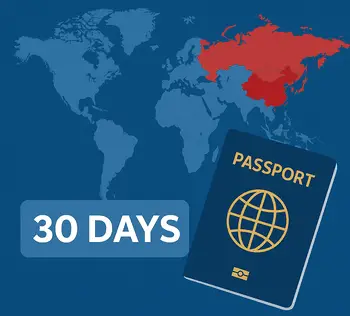
Selecting the optimal business location in China can dramatically impact your company’s success, affecting everything from operational costs and regulatory compliance to market access and talent acquisition.
This comprehensive guide leverages current data, expert insights, and practical frameworks to help you make an informed location decision in China’s complex and rapidly evolving business landscape.
The Strategic Importance of Location Selection in China
China’s regional economic diversity creates significant variations in business conditions across the country.
According to the World Bank’s 2024 Doing Business in China report, business registration time varies from 4 days in Shenzhen to 12 days in inland cities, while operating costs can differ by up to 40% between tier-1 and tier-3 cities.
| Location Factor | Impact on Business | Variation Across Regions |
|---|---|---|
| Operating costs | 15-40% of revenue | Up to 300% difference between cities |
| Market access | Customer acquisition costs | 30-60% variation in CAC by region |
| Regulatory environment | Compliance costs, approval timelines | Processing times vary by 3-15 days |
| Talent availability | Recruitment costs, salary expectations | Salary differentials of 20-120% |
| Supply chain efficiency | Logistics costs, inventory requirements | Transportation costs vary by 10-35% |
Source: KPMG China Business Location Strategy Report, 2025
Current Business Environment Across China’s Regions (2025)
Economic Performance by Region
| Region | GDP Growth (2024) | Foreign Investment Growth | Key Industries | Business Cost Index* |
|---|---|---|---|---|
| Yangtze River Delta | 5.8% | 7.2% | Advanced manufacturing, fintech, services | 142 |
| Pearl River Delta | 6.2% | 8.5% | Tech hardware, e-commerce, logistics | 138 |
| Beijing-Tianjin-Hebei | 5.3% | 4.8% | AI, government services, education | 145 |
| Chengdu-Chongqing | 7.1% | 12.3% | Consumer goods, automotive, tourism | 105 |
| Central China | 6.5% | 9.7% | Manufacturing, agriculture tech, logistics | 92 |
| Northeast China | 4.2% | 3.5% | Heavy industry, robotics, healthcare | 87 |
*Business Cost Index: National average = 100, higher numbers indicate higher costs Source: National Bureau of Statistics of China and China Investment Yearbook 2025
“Regional economic clusters in China are increasingly specialized. The most successful foreign businesses align their location strategy with these specializations rather than simply choosing the largest cities.” — James Zhang, Location Strategy Director, PwC China
Comprehensive Location Selection Framework
Step 1: Define Your Business Requirements
Before evaluating locations, clearly define your priorities based on your business model:
| Business Type | Primary Location Drivers | Secondary Considerations |
|---|---|---|
| Manufacturing | Supply chain access, labor costs, land availability | Environmental regulations, utility costs, logistics |
| Tech/R&D | Talent pool, innovation ecosystem, IP protection | Quality of life, university partnerships, incentives |
| Retail/Consumer | Customer demographics, foot traffic, competition | Rental costs, local purchasing power, brand perception |
| Services | Client proximity, business ecosystem, talent | Office costs, connectivity, industry clusters |
| Regional HQ | Connectivity, talent pool, living standards | Tax structure, international schools, ease of doing business |
Step 2: Evaluate City Tiers and Specializations
China’s cities are commonly categorized into tiers, each offering distinct advantages:
| City Tier | Representative Cities | Advantages | Challenges | Best For |
|---|---|---|---|---|
| Tier-1 | Shanghai, Beijing, Guangzhou, Shenzhen | International connectivity, sophisticated consumers, talent pool | High costs, intense competition, stringent regulations | Global brands, financial services, luxury retail, corporate HQs |
| New Tier-1 | Hangzhou, Chengdu, Nanjing, Wuhan, Suzhou | Strong growth, lower costs, government support | Developing infrastructure, fewer international connections | Tech startups, regional offices, manufacturing headquarters |
| Tier-2 | Xiamen, Changsha, Zhengzhou, Hefei | Affordable operations, growing middle class, incentives | Less international exposure, talent retention challenges | Manufacturing, domestic market entry, back-office operations |
| Tier-3 & 4 | Guilin, Zhuhai, Huizhou, Yantai | Low costs, first-mover advantages, local government support | Limited international facilities, smaller talent pool | Labor-intensive manufacturing, natural resources, tourism |
Source: Yicai Global City Rankings 2025
Step 3: Analyze Specific Business Costs
Operating costs vary significantly across regions:
| Cost Category | Shanghai | Beijing | Shenzhen | Chengdu | Wuhan | Hefei |
|---|---|---|---|---|---|---|
| Office Space (¥/m²/month) | 230-450 | 220-420 | 180-350 | 90-180 | 80-150 | 60-120 |
| Factory Space (¥/m²/month) | 35-70 | 30-65 | 28-60 | 18-40 | 15-35 | 12-30 |
| – Manufacturing Worker | 8,500 | 8,200 | 7,800 | 5,800 | 5,200 | 4,800 |
| – Software Engineer | 30,000 | 32,000 | 28,000 | 18,000 | 16,000 | 14,000 |
| – Mid-level Manager | 45,000 | 48,000 | 40,000 | 25,000 | 22,000 | 20,000 |
| Electricity (¥/kWh) | 0.95-1.15 | 0.98-1.20 | 0.90-1.10 | 0.85-1.05 | 0.80-1.00 | 0.78-0.95 |
| Corporate Income Tax* | 15-25% | 15-25% | 15% | 15-25% | 15-25% | 15-25% |
*Base rate 25%, reduced rates available in special zones and for qualified industries Source: Jones Lang LaSalle China Property Market Report Q1 2025 and Mercer Cost of Living Survey 2025
Regional Regulatory Environments and Incentives
Special Economic Zones and Their Benefits
China’s special economic zones offer distinct advantages for specific business types:
| Zone Type | Notable Examples | Key Incentives | Best For | Application Process |
|---|---|---|---|---|
| Free Trade Zones | Shanghai FTZ, Hainan FTZ | Simplified customs, 15% CIT, foreign exchange flexibility | Trading, logistics, financial services | 30-45 day approval |
| High-Tech Zones | Zhongguancun (Beijing), Suzhou Industrial Park | R&D subsidies, IP protection, talent incentives | Technology, biotech, advanced manufacturing | 45-60 day approval |
| Economic Development Zones | Kunshan EDZ, Wuxi ETDZ | Land subsidies, tax holidays, utility discounts | Manufacturing, processing, assembly | 30-60 day approval |
| Cross-Border E-commerce Zones | Hangzhou CBEC, Guangzhou CBEC | Simplified customs, bonded warehousing, VAT benefits | E-commerce, digital services, retail | 20-40 day approval |
Source: Ministry of Commerce of China and China Briefing
Recent Regulatory Changes Affecting Location Decisions (2023-2025)
| Regulatory Area | Recent Changes | Impact on Location Strategy |
|---|---|---|
| Data Security | Data Security Law implementation | Requires data localization; favors locations with secure data centers |
| Environmental Protection | Stricter emissions standards in Yangtze River Delta | Manufacturing operations face higher compliance costs in eastern regions |
| Foreign Investment | 2024 Negative List reduction | More sectors open to foreign investment in central and western regions |
| Labor Regulations | New minimum wage standards | Labor cost advantages shifting to inland provinces |
| Tax Incentives | Enhanced R&D deductions in targeted sectors | Locations with industry-specific incentives more attractive |
“The regulatory landscape in China is increasingly regionalized. Local implementation of national policies can vary significantly, making it essential to understand city-specific regulatory environments.” — Sarah Chen, Regulatory Affairs Director, AmCham China
Industry-Specific Location Considerations
Manufacturing and Industrial Operations
Manufacturing location decisions should consider industry clusters, supply chain integration, and logistics networks:
| Manufacturing Sector | Optimal Regions | Key Advantages | Notable Industrial Parks |
|---|---|---|---|
| Electronics & Semiconductors | Shenzhen, Suzhou, Chongqing | Established supply chains, skilled labor | Shenzhen Hi-Tech Industrial Park, Suzhou Industrial Park |
| Automotive | Shanghai, Changchun, Chongqing | Supplier networks, logistics infrastructure | Shanghai International Automobile City, Chongqing Liangjiang New Area |
| Pharmaceuticals & Medical Devices | Shanghai, Suzhou, Wuhan | Regulatory expertise, research facilities | Zhangjiang Hi-Tech Park, Wuhan Biolake |
| Textiles & Apparel | Guangzhou, Hangzhou, Shaoxing | Established clusters, export facilities | Keqiao Textile Industry Zone, Guangzhou Textile Exchange Park |
| Advanced Materials | Nanjing, Dalian, Qingdao | Research facilities, port access | Nanjing Chemical Industry Park, Dalian Chemical Industry Park |
Source: China Industrial Park Directory and KPMG Manufacturing in China Report 2025
Manufacturing Cost Comparison (2025):
| Cost Factor | Yangtze River Delta | Pearl River Delta | Central China | Western China |
|---|---|---|---|---|
| Labor (Index) | 140 | 135 | 100 | 85 |
| Land (Index) | 160 | 150 | 90 | 75 |
| Electricity (¥/kWh) | 0.90-1.10 | 0.85-1.05 | 0.75-0.95 | 0.65-0.85 |
| Water (¥/ton) | 5.2-6.5 | 4.8-6.0 | 3.5-4.8 | 3.0-4.2 |
| Logistics (% of COGS) | 8-12% | 7-11% | 10-15% | 12-18% |
| Environmental Compliance | High | High | Medium | Medium-Low |
*Index: Central China = 100 Source: Deloitte China Manufacturing Cost Analysis 2025
Technology and Innovation Businesses
Tech companies should prioritize innovation ecosystems, talent availability, and digital infrastructure:
| Tech Sector | Leading Hubs | Ecosystem Strengths | Notable Incubators/Parks |
|---|---|---|---|
| AI & Big Data | Beijing, Shanghai, Shenzhen | Research institutions, computing resources | Zhongguancun AI Park, Shanghai AI Tower |
| Fintech | Shanghai, Hangzhou, Shenzhen | Financial institutions, regulatory sandboxes | Lujiazui Fintech Hub, Hangzhou Fintech Center |
| E-commerce | Hangzhou, Beijing, Guangzhou | Logistics networks, digital payment ecosystem | Hangzhou E-Commerce Industrial Park, Beijing E-Town |
| Gaming & Digital Entertainment | Shanghai, Chengdu, Guangzhou | Creative talent, digital content clusters | Shanghai Cultural and Creative Industry Park, Chengdu Game Industry Park |
| Biotech | Shanghai, Suzhou, Beijing | Research facilities, clinical resources | Shanghai Zhangjiang Biotech Park, Suzhou BioBAY |
Source: China Innovation Index 2025 and Startup Genome China Ecosystem Report
Tech Talent Availability by Region (2025):
| Talent Metric | Beijing | Shanghai | Shenzhen | Hangzhou | Chengdu | Wuhan |
|---|---|---|---|---|---|---|
| Tech Graduates/Year | 120,000+ | 100,000+ | 80,000+ | 60,000+ | 70,000+ | 65,000+ |
| Average Tech Salary (¥/year) | 320,000 | 300,000 | 280,000 | 220,000 | 180,000 | 160,000 |
| Foreign Talent Pool | Large | Large | Medium | Small | Small | Small |
| Tech Talent Density* | 8.5% | 7.8% | 9.2% | 6.5% | 5.2% | 4.8% |
| Talent Retention Rate | 68% | 72% | 65% | 70% | 75% | 78% |
*Percentage of workforce in technology roles Source: LinkedIn China Talent Report 2025 and China IT Talent Association
Practical Location Selection Process
Step-by-Step Decision Framework
Follow this structured approach to make a data-driven location decision:
- Define Business Requirements (Week 1-2)
- Identify non-negotiable needs (regulatory approvals, market access, etc.)
- Determine budget constraints for setup and operations
- Establish timeline for market entry or expansion
- Initial Location Screening (Week 3-4)
- Create shortlist of 5-7 potential locations based on industry clusters
- Gather preliminary data on costs, regulations, and market access
- Eliminate locations that fail to meet critical requirements
- Detailed Location Analysis (Week 5-8)
- Conduct comprehensive cost modeling for shortlisted locations
- Analyze talent availability and recruitment challenges
- Evaluate supply chain and logistics considerations
- Research local incentives and support programs
- Site Visits and Stakeholder Engagement (Week 9-12)
- Visit top 2-3 locations for firsthand assessment
- Meet with local government officials and investment promotion agencies
- Connect with existing businesses in the area (especially foreign companies)
- Evaluate practical living conditions for expatriate staff
- Final Selection and Implementation Planning (Week 13-16)
- Create weighted decision matrix incorporating all factors
- Develop detailed implementation timeline and budget
- Initiate discussions with local authorities on incentives
- Begin preparation of regulatory applications
Case Studies: Successful Location Strategies
Manufacturing: German Auto Parts Supplier
“After evaluating 12 potential locations, we selected Taicang (near Shanghai) for our manufacturing facility despite higher costs than inland options. The deciding factors were proximity to our automotive customers, established supply chain, and the strong German business community providing valuable support networks.” — Technical Director, German Auto Parts Manufacturer
Key Success Factors:
- Prioritized customer proximity over absolute cost minimization
- Leveraged existing industry cluster and business community
- Negotiated targeted incentives for advanced manufacturing equipment
- Implemented phased expansion strategy starting with assembly, adding more complex production later
Technology: Finnish Software Company
“For our China R&D center, we chose Chengdu over Beijing and Shanghai. While tier-1 cities offered larger talent pools, Chengdu provided a better combination of technical talent, significantly lower operating costs, and excellent government support. The quality of life and lower pressure environment also improved our talent retention.” — China CEO, Finnish Software Company
Key Success Factors:
- Focused on talent retention rather than just recruitment
- Utilized university partnerships for talent pipeline
- Secured significant incentives from local government
- Maintained sales office in Beijing while locating R&D in lower-cost location
Regional Spotlight: Emerging Business Hubs
While tier-1 cities dominate business discussions, several emerging locations offer compelling advantages:
Hangzhou: Digital Economy Powerhouse
Home to Alibaba and numerous digital startups, Hangzhou combines:
- Strong digital infrastructure and e-commerce ecosystem
- 15% lower operating costs than Shanghai
- Scenic environment with high quality of life
- Hangzhou Future Sci-Tech City offering specific incentives for digital businesses
Chengdu-Chongqing Economic Circle
This rapidly developing twin-city region offers:
- 300+ Fortune 500 companies already established
- 40-50% lower operating costs than eastern seaboard
- Strong transportation hub for western China
- Specialized parks like Chongqing Liangjiang Digital Economy Innovation Zone
Greater Bay Area (Beyond Shenzhen)
Cities like Zhuhai, Dongguan, and Foshan provide:
- Integration with the GBA development plan
- Proximity to Shenzhen/Hong Kong with 30-40% lower costs
- Specialized manufacturing clusters with established supply chains
- Zhuhai-Macao Cross-Border Cooperation Zone with unique policy advantages
Source: EY China Regional Investment Attractiveness Report 2025
Navigating Cultural and Practical Challenges
Language and Cultural Considerations
| Region | Business Culture | English Proficiency | Local Government Approach |
|---|---|---|---|
| North China (Beijing area) | Formal, relationship-focused, government connections valued | Medium-High in business settings | Process-oriented, emphasis on stability |
| East China (Shanghai area) | Commercial, pragmatic, international outlook | High in business settings | Business-friendly, efficiency-focused |
| South China (Guangdong) | Entrepreneurial, fast-paced, results-oriented | Medium in business, high in Hong Kong-adjacent areas | Innovative, flexible, growth-oriented |
| Central/Western China | Traditional, relationship-based, developing international awareness | Lower, but improving in business hubs | Aggressive incentives, hands-on support |
Source: Hofstede Insights China Regional Analysis and TMF Group Business Culture Index
Practical Setup Considerations
| Setup Element | Tier-1 Cities | New Tier-1 Cities | Tier-2/3 Cities |
|---|---|---|---|
| Business Registration Time | 5-15 working days | 10-20 working days | 15-30 working days |
| One-Stop Service Centers | Comprehensive, often with English service | Available, limited English service | Basic services, rarely English-speaking |
| Bank Account Setup | 2-4 weeks | 3-5 weeks | 4-8 weeks |
| Internet/IT Infrastructure | World-class | Very good | Adequate to good |
| International Schools | Multiple options | Limited options | Few or no options |
| International Healthcare | Multiple international hospitals | Limited international clinics | Few international medical options |
Source: World Bank Doing Business in China 2025 and Dezan Shira & Associates Setup Guide
Expert Resources for Location Selection
Government Resources
- Invest in China – Official investment promotion portal
- China Investment Promotion Agency – National-level investment support
- Provincial Investment Promotion Bureaus (e.g., InvestShanghai, InvestBeijing)
Professional Services
- Site Selection China – Specialized location advisory services
- China International Investment Promotion Agency – Government-backed site selection support
- AmCham China Business Climate Survey – Peer insights on locations
Data Resources
- China Statistical Yearbook – Official economic data by region
- CEIC China Premium Database – Comprehensive economic indicators
- China City Tier System – Updated city classifications
Conclusion
Choosing the right business location in China requires balancing multiple factors including costs, market access, regulatory environment, and talent availability.
The optimal location varies dramatically based on your industry, business model, and growth strategy.
Rather than following conventional wisdom or simply choosing the largest cities, successful businesses in China take a data-driven approach that:
- Aligns location with specific business requirements and long-term strategy
- Considers total operating environment beyond simple cost comparisons
- Evaluates both established and emerging business hubs
- Incorporates cultural and practical considerations alongside financial factors
- Leverages available incentives and support programs
By following the structured approach outlined in this guide and utilizing the decision framework provided, businesses can identify locations that offer the optimal combination of advantages for their specific needs in China’s diverse and dynamic business landscape.


